Shopping for a graphics card? You have a lot to pick from. We tested the cream of the crop from AMD and Nvidia to help you find a graphics card that fits your needs.
If a speedy processor is the brain of a gaming PC, the graphics card is the heart and soul. A powerful graphics card can mean the difference between a sensory feast and an interactive slideshow. Although upgrading your graphics board is one of the simplest ways to produce noticeable improvements in your PC’s gaming performance, it’s also one of the most confusing: Throwing extra money at the problem isn’t always the best solution, and you have lots of products to choose from. Don’t fret, however: We’re here to help.
Only two major graphics-processor manufacturers exist these days. In the green corner is Nvidia, which serves up powerful, energy-hungry hardware. In the red corner is AMD, whose offerings are competitive but generally less taxing on your electricity bill and your wallet.
Each company does things a bit differently. Consider support formultiple graphics cards: AMD calls its technology CrossFire and Nvidia calls its version SLI, but both allow you to pair up identical graphics cards to eke a bit more performance out of your PC. You won’t enjoy a 100 percent performance gain by slapping another card into your rig, but you will see a worthwhile speedup if you can afford the cost--and if your motherboard (and power supply) can support more than one card.
Graphics cards have quite a bit more to offer than just making your games pretty. If you want multiple displays, look to AMD, which offers Eyefinity technology: A single AMD card can support up to three monitors, which can be a boon if you have plenty of desk space and you like to give games as much real estate as you can muster. Nvidia’s graphics cards are limited to two screens; if you want more, generally you’ll need to run two cards in SLI.
Another important consideration, for some gamers, is 3D. Both AMD and Nvidia make graphics cards that are capable of 3D video playback and 3D gaming, but Nvidia’s 3D Vision ecosystem has been around for years, and you’ll find various games and hardware built with Nvidia’s technology in mind.
Tossing a wrench into the works is the slew of vendors offering their own branded cards, which use AMD or Nvidia GPUs. These products will account for differences in price, as some vendors overclock their cards, slap on custom heatsinks and cooling technology, or even bundle a few games.
We decided to compare several current AMD and Nvidia cards, at the affordable, midrange, and high-end levels. We evaluated them using the 3DMark 11 and Unigine Heaven benchmarks, and we ran our own tests with two games: Crytek’s Crysis 2 and Codemasters’ Dirt 3. We performed all tests at the highest settings at multiple resolutions on 30-inch monitors. We used separate testbeds for the AMD and Nvidia cards to avoid driver issues, but we ran our tests on identical hardware.
The Frugal Gamer ($250):
AMD Radeon HD 6870 vs. Nvidia GeForce GTX 560 Ti
We’ll start with AMD’s Radeon HD 6870 and Nvidia’s GeForce GTX 560 Ti. You can find each card for $175 to $250, depending on the vendor and where you’re shopping. They aren’t quite budget offerings, as plenty of cards priced less than $150 will prove serviceable. But these cards are a good place to start if you’re seeking great performance at a price that doesn’t break the bank.
The HD 6870 is generally available for about $30 less than the GTX 560 Ti, and that difference played out (more or less) in our testing results: The HD 6870 almost invariably finished behind the GTX 560 Ti on our benchmarks, though never by very much.
CHART NOTES: 4xAA = 4x antialiasing; fps = frames per second. For all scores, higher (shown in red) is better. For more information about interpreting 3DMark 11 scores, visit 3DMark.com.
In Unigine Heaven, the HD 6870 pulled ahead for the only time, reaching 30.6 frames per second to the GTX 560 Ti’s 29.8 fps at a resolution of 1920 by 1080 pixels with antialiasing turned on. This is about as negligible as differences get; remember, too, that Unigine is a synthetic benchmark, with no direct correlation to real-world performance.
Testing on real games painted a clearer picture, but didn’t favor either card too much. Nvidia remained in the lead: Across all resolutions and test settings, the GTX 560 Ti averaged about 5 fps faster than the HD 6870 did in Crysis 2, and about 10 fps faster in Dirt 3.
To get a better idea of how these cards stack up, look beyond the numbers. The HD 6870 offers a pair of DVI ports, an HDMI port, and two mini-DisplayPort connectors, as well as AMD’s Eyefinity techonlogy. The GTX 560 Ti’s relatively meager selection consists of two DVI ports and a mini-HDMI port.
Finally, consider energy efficiency. The GTX 560 Ti drew 220 watts under load, versus the HD 6870’s 187 watts. While the difference in your energy bill might not be immediately noticeable, you’ll want to keep the power drain in mind should you eventually decide to add a second card to take advantage of SLI or CrossFire performance.
Winner: Nvidia GeForce GTX 560 Ti
If you’re on a budget, you’ll find better things to spend your money on than three monitors, so Eyefinity isn’t such an appealing prospect. At this level, Nvidia’s card is the better option, offering great performance at a fine price. 3D Vision support (if you’re into that sort of thing) is the icing on the cake.
If you’re on a budget, you’ll find better things to spend your money on than three monitors, so Eyefinity isn’t such an appealing prospect. At this level, Nvidia’s card is the better option, offering great performance at a fine price. 3D Vision support (if you’re into that sort of thing) is the icing on the cake.
The Mainstream Gamer ($350):
AMD Radeon HD 6970 vs. Nvidia GeForce GTX 570
Farther up the line are AMD’s Radeon HD 6970 and Nvidia’s GeForce GTX 570. Each card costs from $300 to $350. Although they’re a little pricier than budget offerings, your investment will pay off in the long run: Neither card will be obsolete anytime soon, and both will tackle the latest and greatest games with all the bells and whistles cranked up.
CHART NOTES: 4xAA = 4x antialiasing; fps = frames per second. For all scores, higher (shown in red) is better. For more information about interpreting 3DMark 11 scores, visit 3DMark.com.
On our benchmark tests, the HD 6970 regularly trailed the GTX 570, but the margins were even tighter this time around. On Unigine Heaven at 1920 by 1200 resolution without antialiasing, the GTX 570 managed to stay ahead of the HD 6970 by a scant 2.3 frames per second. When we cranked the resolution up to 2560 by 1600 and turned antialiasing on, their roles briefly reversed: The HD 6970 reached a rate of 21.6 fps, versus the GTX 570’s 20.8 fps. Blink, and you’ll miss the difference.
On real-world games the results were a little more noticeable: At 2560 by 1600 with antialiasing, the HD 6970 ran Dirt 3 at 40.5 fps, whereas the GTX 570 chugged along at 41.0 fps. In Crysis 2 at the same settings, the gap was a bit more pronounced, with AMD’s card managing 20.6 fps and Nvidia’s card achieving 24.6 fps. Keep in mind that we got these results at the maximum available settings on 30-inch monitors. Mere mortals equipped with 24-inch panels set at 1920 by 1200 (or a lower resolution) can enjoy these games in all their glory on either card, without compromises.
This race boils down to features, and again AMD takes top honors in that respect: The HD 6970 is outfitted with two DVI ports, a pair of mini-DisplayPort ports, and an HDMI connector. The GTX 570 offers two DVI ports and an HDMI port. As for power consumption, under load the HD 6970 draws 233 watts, versus the GTX 570’s 267 watts.
Winner: AMD Radeon HD 6970
After you’ve spent $350 (or less) on this card, you should have enough left in your wallet to grab a third monitor; Eyefinity will serve you well. And even if you stick with two screens (or just one), you’ll save money without suffering many drawbacks--feel free to buy extra RAM, or that nice keyboard you’ve been eyeing.
After you’ve spent $350 (or less) on this card, you should have enough left in your wallet to grab a third monitor; Eyefinity will serve you well. And even if you stick with two screens (or just one), you’ll save money without suffering many drawbacks--feel free to buy extra RAM, or that nice keyboard you’ve been eyeing.
The Well-Heeled Gamer ($700):
AMD Radeon HD 6990 vs. Nvidia GeForce GTX 590
These are the graphics cards that legends are made of: You won’t find AMD's Radeon HD 6990 or Nvidia's GeForce GTX 590 for less than $700. In fact, you’ll be hard-pressed to find them at all, owing to seriously limited supply.
CHART NOTES: 4xAA = 4x antialiasing; fps = frames per second. For all scores, higher (shown in red) is better. For more information about interpreting 3DMark 11 scores, visit 3DMark.com.
So which one deserves the title of the world’s fastest graphics card? It depends. On our synthetic-benchmark tests, the HD 6990 edged out ahead. In Unigine Heaven at 2560 by 1600 with antialiasing, it ran at 40.9 frames per second, versus the GTX 590’s rate of 40.3 fps. In 3DMark 11, AMD’s card maintained the lead, with a score that was 3.4 percent higher than the Nvidia card’s result.
Synthetic benchmarks are a nice way to estimate how the cards would theoretically perform in future games, but what about the games people are playing right now? In Dirt 3, the HD 6990 reached 73.6 fps at 2560 by 1600 resolution with antialiasing, while the GTX 590 achieved 72.1 fps. Once we moved to Crysis 2, the positions reversed: While AMD’s card hit 39.6 fps, Nvidia’s card reached 43.1 fps.
The difference in power consumption between these two titans is par for the course: The HD 6990 pulled 371 watts of power under load, while the GTX 590 consumed 470 watts. That’s a dramatic difference--and one that’s sure to make you fast friends with your utilities provider, should you choose the Nvidia card.
Both cards sport dual GPUs; think SLI or CrossFire on a single card. AMD’s Eyefinity technology allows the HD 6990--which carries four mini-DisplayPort connectors and a DVI port--to drive five 24-inch displays. The GTX 590 can support four 24-inch displays, since it’s equipped with three DVI ports and one mini-DisplayPort connector. If you opt for Nvidia’s 3D Vision Surround, the card can support three 3D displays.
Winner: A draw
The testing results are tight, and will only muddle further as driver improvements optimize each card’s performance. If you’re in the market for a $700 graphics card, working a few 30-inch monitors into the mix might not be out of the realm of possibility--the HD 6990 will let you run three at once. But if you’re into 3D, nothing can beat Nvidia’s 3D Vision Surround.
The testing results are tight, and will only muddle further as driver improvements optimize each card’s performance. If you’re in the market for a $700 graphics card, working a few 30-inch monitors into the mix might not be out of the realm of possibility--the HD 6990 will let you run three at once. But if you’re into 3D, nothing can beat Nvidia’s 3D Vision Surround.
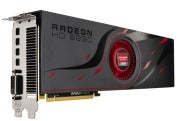
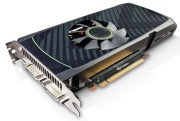
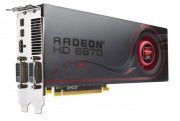
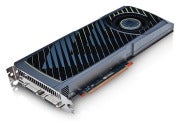
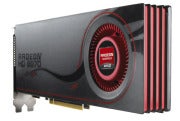
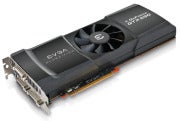








1 comments:
In certain areas, the difference is little yet substantial. Geekbench, one of the CPU benchmarks, discovers an average gross power gain of about 2%. But it is in the experiments that are closer to real-world situations that the results are most fascinating. Windows 11 wins by more than 10% on BrowserBench Spedometer 2, a test that measures the smoothness of online browsing. Finally, UL PCMark 10 is an intriguing test that evaluates a wide range of real-world applications (video conferencing, video editing, spreadsheets, etc.). On the graphics front, the same observation applies as with 3DMark: Windows 10 wins by a hair, for the reasons stated above.
adobe audition cc crack
reimage pc repair crack
logic pro x crack
hitmanpro crack
bitdefender total security crack
hotspot shield vpn premium crack
drivereasy professional crack
mixpad crack
pgware gameswift crack
teamviewer crack